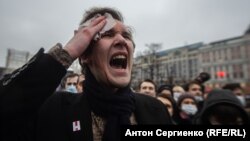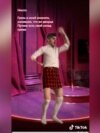From Vladivostok to St. Petersburg, thousands of Russians took to the streets across Russia on January 23 to call for the release of opposition leader Aleksei Navalny from prison in what some Russian observers termed the largest series of national demonstrations against President Vladimir Putin’s rule in recent years.
Navalny was sentenced to 30 days in jail on January 18 after recuperating in Germany from a nerve-agent poisoning. After an investigation that linked the attack to Russia’s Federal Security Service, he now faces charges both for alleged parole violations and for supposedly defrauding donors of some $4.84 million in Russian rubles.
Although no reliable estimates exist for the number of people nationwide who attended unauthorized rallies against these charges, television and video footage suggested a robust turnout in multiple major metropolitan areas.
That, however, may have less to do with Navalny himself and more to do with his status as a symbol for the injustices many ordinary Russians believe they face as well, commented Novaya Gazeta Political Editor Kirill Martynov.
Young people who came of age in the information-rich Internet era play an important role in that dynamic, others believe. Television footage suggested that Russians no older than their mid-30s accounted for much, if not most, of the turnout.
This is a generation that is no longer “conformist” and does not want to live its entire life under the rule of President Putin, commented Andrei Kolesnikov, head of the Carnegie Moscow think-tank’s Russian Domestic Politics and Political Institutions program.
Younger protesters in Moscow appeared to reflect that perception.
“How much is it possible to be afraid?” asked one man in his 20s on Moscow’s Strastnoi Bulvar, as riot police linked arms to push protesters out of the area.
A younger male wearing a bloodied white head bandage urged viewers not to be afraid to come out into the streets because he had been beaten. “The more people we have come out, the faster we’ll achieve justice,” he said.
By mid-evening, Moscow time, on January 23, the director of the non-governmental law-enforcement watchdog OVD-Info, Leonid Drabkin, estimated that a 10-year record for detentions had been reached. As of the early hours of January 24, OVD-Info had calculated 3,228 detentions nationwide. Together, Moscow and St. Petersburg accounted for over half of these detentions.
Riot and ordinary police in Moscow, which accounted for 1,249 of the detentions, often appeared to detain protesters – primarily young men – at random.
On the city’s downtown Pushkin Square, the protest’s initial focal point, many of those detained were not chanting slogans or holding a rally poster, but simply standing on the square, Current Time correspondent Aleksei Aleksandrov reported.
In at least one instance, regular police in the Russian capital forcefully attempted to detain a small boy, according to the Telegram channel Avtozak.LIVE.
Even as law enforcement in Pushkin Square beat protesters, loudspeakers informed the public that the police were doing "everything to ensure your security."
Similar violence was witnessed in St. Petersburg as well.
The head of a presidential advisory council on civil society and human rights, Valery Fadeev, commented, however, that he had seen nothing inappropriate in law enforcement's conduct. The demonstrations themselves were, he stressed, "illegal."
But this police behavior did not occur without resistance and outcry.
On Moscow’s central Tsvetnoi Bulvar, protesters threw snowballs at riot police attempting to herd them off the boulevard. TASS alleged that eggs and bottles were also used.
On Pushkin Square, one group of protesters managed to fight off riot police to free a young girl, bearing a placard, from detention. Amidst a clash with demonstrators, a National Guard officer had fallen nearby, leading to her detention, the girl tearfully recounted.
An unnamed law-enforcement source told the state-run RIA Novosti news agency that 39 police officers had been injured during tussles with demonstrators throughout Russia.
Nikolai Petrov, a professor of social sciences at Moscow’s HSE University, noted that, as during Ukraine’s 2014 Euromaidan uprising, any brutal crackdown on students or youngsters could serve as a “catalyst” for strengthening the protests.
The authorities made children a key part of their attempts to discourage participation in the "illegal" rallies.
Urging Russians not to allow children to attend the protests amidst the COVID-19 pandemic has become a rallying cry for officials. On January 22, a criminal investigation was launched into the supposed use of social media by Navalny’s colleagues and supporters to attract such youngsters to the protests. Media regulator Roskomnadzor has announced stiff fines for social-media platforms where any such information is distributed.
Two of Navalny’s colleagues targeted by the probe, Levan Volkov and Ivan Zhdanov, have dismissed these concerns as hysteria.
But law enforcement kept an eye out for adult protesters as well.
Navalny’s wife, Yulia Navalnaya, was detained in Moscow shortly after posting a selfie on Instagram in which she thanked demonstrators on Moscow’s Pushkin Square for supporting her husband. Navalnaya was released by the early evening, but without any information about charges.
Similarly, prominent activist Lyubov Sobol, a lawyer for Navalny’s Anti-Corruption Foundation, was detained by a group of about 15 riot police as she addressed demonstrators on Moscow’s Tverskaya Ulitsa, not far from Pushkin Square.
The detention, for conducting or organizing an unsanctioned rally, was Sobol’s second since January 21. As of late on January 23, she has not been released.
Several journalists and Navalny activists were reportedly also seized in various cities, including Moscow.
Navalny’s Anti-Corruption Foundation has promised to pay the fines of all those detained on January 23. The scope of such an outlay was not immediately clear.
Despite problematic Internet and mobile connections throughout the protest, Navalny, jailed in Moscow’s Matrosskaya Tishina prison, appeared to follow events closely via Twitter. Although he did not comment himself, he regularly retweeted others’ footage of the protests. His last retweet was his wife’s Instagram selfie.
Yet, although posters and cries for Navalny’s freedom were omnipresent, interviewed protesters did not uniformly attribute their participation to the arrest of the opposition leader.
Nor did they mention Navalny’s latest video investigation into alleged government funding of a luxurious Black Sea estate for President Putin or into the Federal Security Service’s alleged role in the activist’s August 2020 poisoning.
“[I came out] because my granddaughter soon will be born,” one middle-aged
woman commented in the Urals city of Chelyabinsk. “And because I didn’t think that my life will end in a fascist state. We didn’t want this in the 90s,” after the Soviet Union’s collapse, she said, barely restraining tears.
In the Siberian city of Yekaterinburg, city council deputy Konstantin Kiselyov explained that the government’s violation of the law toward Navalny had made him realize that the same could happen to anyone.
“That is, I’m not coming out [to the protest] for myself. I’m coming out for people, I’m coming out for the law,” he said.
Such attitudes prompted political analyst Abbas Gallyamov, who supports Navalny, to predict that the opposition may be headed for a comeback as the country heads into parliamentary elections this fall.
With that in mind, one senior Navalny ally, Leonid Volkov, who oversees the politician’s regional offices, has called for the protests to resume on January 30.
If they will, Russian officials should realize that expressing dissatisfaction with the government is a normal part of life, advisedcultural historian Irina Prokhorvoa, editor-in-chief of the Novoye Literaturnoye Obozreniye (New Literary Observer) magazine.
“The authorities should understand that times have changed. This is not the Soviet Union, no matter how much they’ve dreamed about the submissive Soviet Union …” Prokhorova commented. “This is a different generation, a different time.”
















